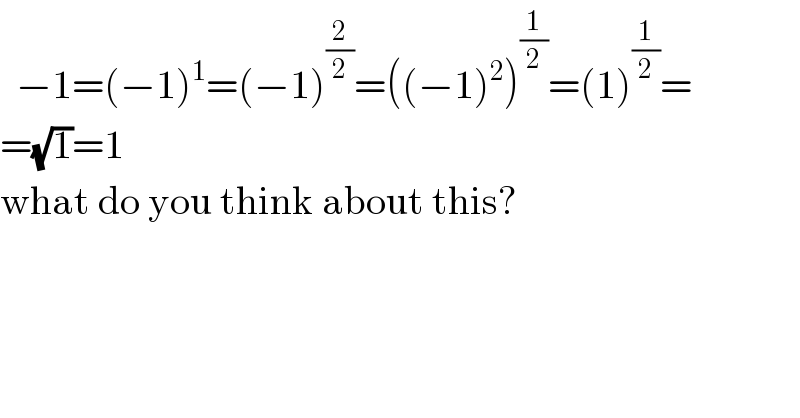
Question and Answers Forum
Question Number 80084 by behi83417@gmail.com last updated on 30/Jan/20

Commented by key of knowledge last updated on 30/Jan/20

Commented by behi83417@gmail.com last updated on 31/Jan/20

Commented by MJS last updated on 31/Jan/20
![we′ve got a definition: C={z=e^(iθ) r∣−π<θ≤π; r∈R^+ } we know that e^(iθ) =e^(i(θ+2πn)) with n∈Z but we only use this for finding all possible solutions of certain equations we define z^q =(e^(iθ) r)^q =e^(i(π−mod (π−qθ, 2π)) r^q for q∈Q, R, C with mod (x, y) ≥0 i.e. mod (−3, 7)=4 [there′s only one exception for z∈R^+ and n∈Z: (−z)^(1/(2n+1)) =−(z^(1/(2n+1)) ) This is useful in elementary mathematics, like 3d geometry or solving polynomes of 3^(rd) degree using Cardano.] ⇒ (z^q )^(1/q) ≠(z^(1/q) )^q in many cases ((−1)^2 )^(1/2) =(1)^(1/2) =1 ((−1)^(1/2) )^2 =(i)^2 =−1 ((3+4i)^4 )^(1/4) =4−3i ((3+4i)^(1/4) )^4 =3+4i](Q80106.png)
